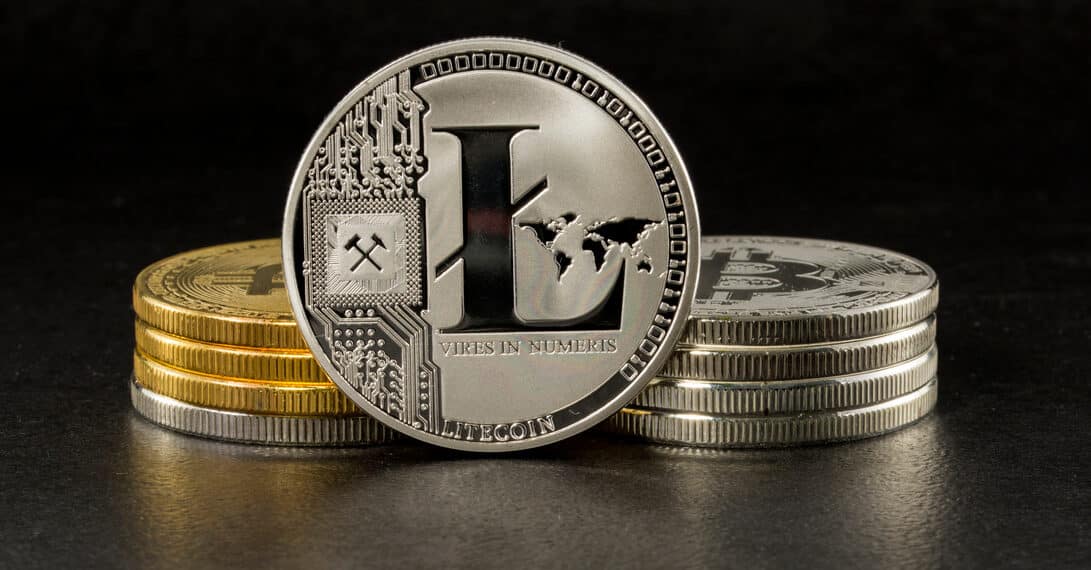Litecoin (LTC) Gets Flash-Pumped on Fake Walmart PR

Litecoin (LTC) went through a trading anomaly on Monday, after news of a partnership with WalMart spread on social media. Before Walmart could respond to the fake statement, LTC prices had already jumped to $230 and later crashed back to the $180 range.
The announcement stirred the markets in general, leading to a small spike in Bitcoin (BTC) prices. BTC returned to levels above $45,700, after dipping close to $44,000 on Monday.
The news that LTC would be accepted as payment at Walmart was amplified and cited by Reuters, leading to an even wider effect on the markets. Observers noted that a single trader managed to use the 15-minute window to perform leveraged trades, leading to significant losses for other participants.
The sudden price action showed the market is still hot and enough traders managed to buy rapidly, on expectations of much higher LTC prices. The crash began immediately after Walmart explained it had no real plans of partnership.
Is LTC Really a Stalled Project
One of the accusations for LTC is that the coin has little utility and no new developments. At a time when almost all networks manage to offer additional features and serve as financial hubs, LTC remains a simple means of payment.
One of the advantages of LTC is that it is highly liquid and is present in multiple trading pairs on most exchanges. It is a suitable off-ramp to take funds out, with lower fees and no network congestion.
LTC plans to launch its transaction veiling mechanism, MimbleWimble, thus becoming a potentially anonymous means of payment. The coin has an active community, and its active address usage is at a three-year high.
Litecoin network mining also remains robust, and LTC is one of the coins that are most difficult to attack. LTC transfers are thus very fast and require a small number of confirmations. The mining of LTC also generates new Dogecoin (DOGE) through bundled mining, adding to the project’s exposure and success.
Will Litecoin Offer Tokenization
The overwhelming growth of decentralized finance has reached the developers at the Litecoin Foundation. While the Litecoin network will remain the same, there are plans to launch an OmniLite layer. Similar to the Bitcoin Omni Layer, this is a technology to create tokens based on the Litecoin network.
Potentially, this move will create the opportunity to build both fungible tokens for decentralized finance and smart contracts, and non-fungible tokens (NFTs) for crypto collectibles.
Did LTC Get an Unfair Advantage
In the past few years, LTC has been under scrutiny for alleged insider trading. The coin’s creator, Charlie Lee, held a position at Coinbase when LTC was listed. In 2017, LTC was among the few assets available through Coinbase, which boosted the market price significantly.
In late 2017, Lee also sold all of his LTC holdings at peak market prices above $370. Since then, he has kept a distance from the project, leaving the Litecoin Foundation to handle popularization.
Can LTC Recover Higher Levels
In 2021, LTC managed to achieve all-time highs above $400, before sinking back as low as $100 during the July sell-off and subsequent flash crashes.
LTC has always offered significant volatility, and its spikes have been short-liver. Currently, LTC is offering hopes it can revisit the $200 levels. LTC prices have returned to their sideways drift of consolidation, with the potential for a new breakout.
LTC trading volumes remain relatively high at $8.9B in 24 hours, surpassing the activity of Cardano (ADA) and other hot assets. Still, LTC is now out from among the top 15 of coins by market capitalization, after being displaced by Avalanche (AVAX).
Can Crypto Become the Norm for Payments
LTC has been included in multiple payment mechanisms. It has been used as a storage mechanism for assets on the Abra payment app. LTC is also available through the Robinhood app, becoming one of the most accessible assets for mainstream adoption.
Additionally, the Walmart news arrived just days after the launch of the El Salvador BTC payment acceptance.
However, there are still warnings that crypto coins are not a good tool for payments, mostly due to their volatile market price. Demands for KYC verification also curb cryptocurrency adoption.
Walmart Still Supports Blockchain Innovation
Walmart was chosen as the target of a fake PR is that the retail company has actually expressed interest in blockchain technology. Walmart has filed patents for supply chain tracking through blockchain, and participates in a blockchain exploration group alongside IBM.
Walmart already partners with VeChain (VET) for some of its fresh produce supply chains. VeChain is one of the projects offering working business-grade solutions for authenticity tracking.
Despite this, Walmart has not offered cryptocurrency payment options.

Uphold makes buying crypto with popular currencies like USD, EUR and GBP very simple with its convenient options to swap between crypto, fiat, equities, and precious metals.

With over 50 coins and an obsession with security, Kraken is one of the safest places to buy and trade crypto.

Kraken has a good reputation for security and protection of your funds and operates across the USA (except NY), Canada, the EU and Japan

Based in Charleston, South Carolina. Serves over 184 countries and has done over $4 billion in transactions. Offers convenient options to swap between crypto, fiat, equities, and precious metals.

Who are the biggest influencers in the NFT space across the various social media platforms.

We explain the safest and easiest way to buy Bitcoin and other crypto using your credit or debit card.

This is a specific digital coin running on a series of servers. XRP promises utility in handling cross-border transactions to compete with the SWIFT interbank payment system. Being controlled by banks, many question if it is a true cryptocurrency.

An innovative digital asset utilizing a fully decentralized consensus protocol called Ourobouros. The network aims to compete with Ethereum in offering smart contract functionalities. However it is lightyears behind Ethereum in terms of adoption.